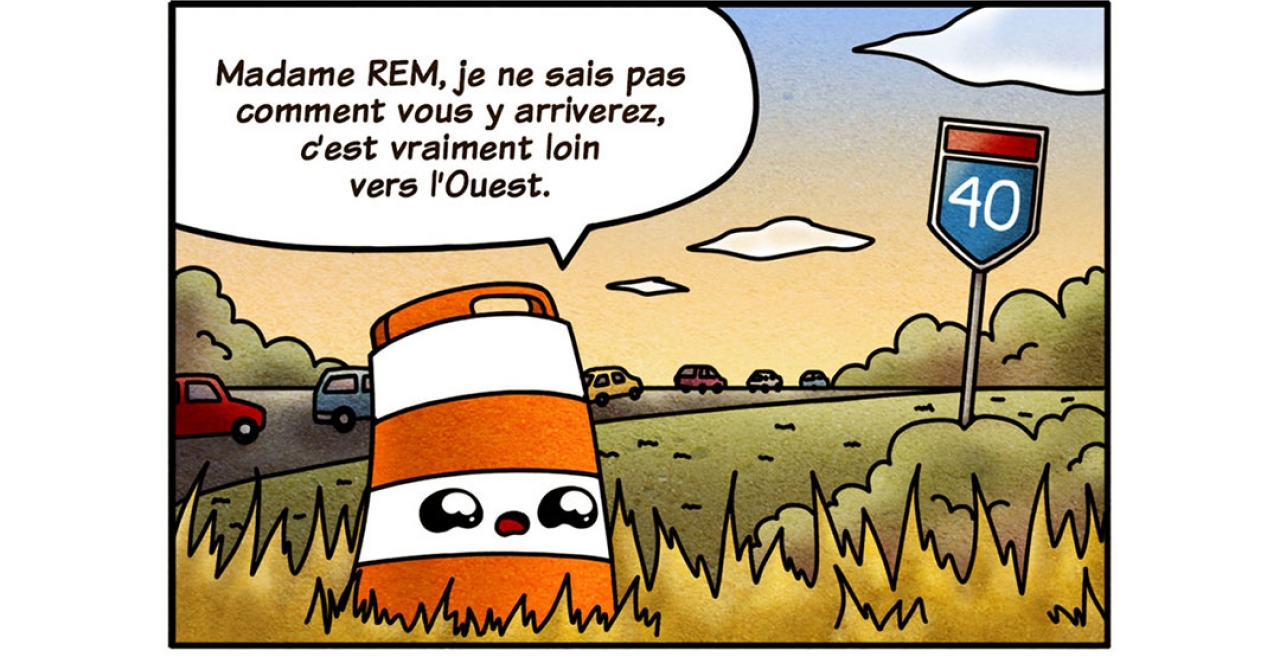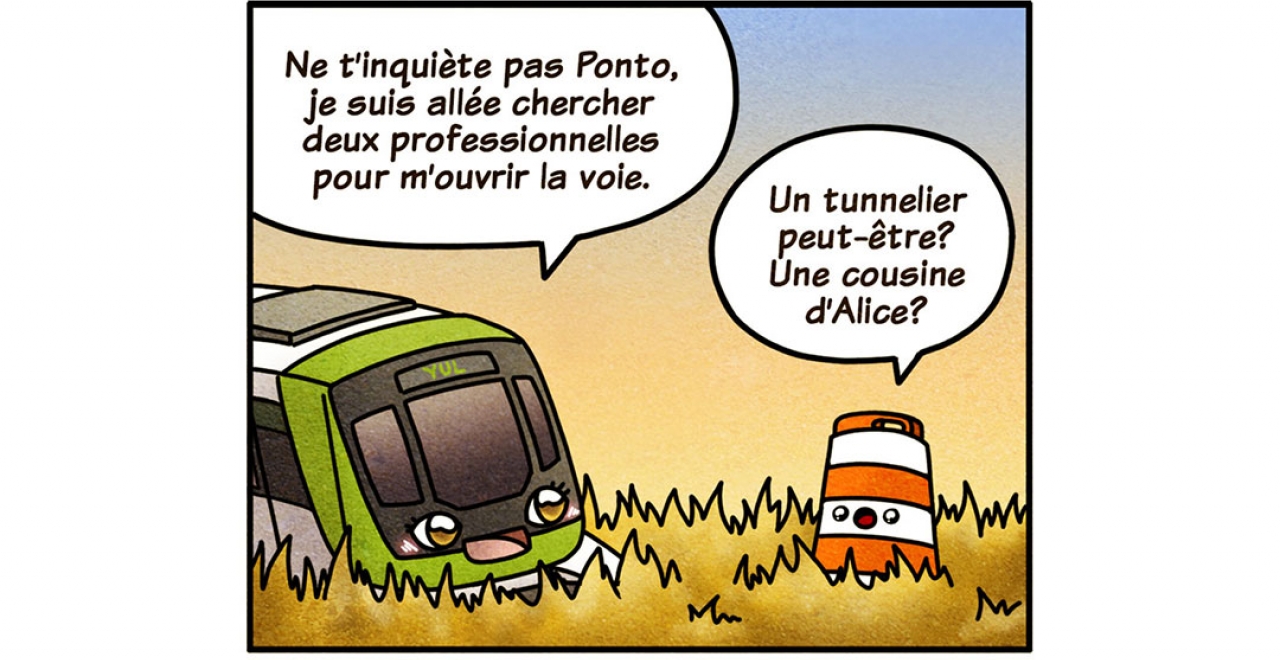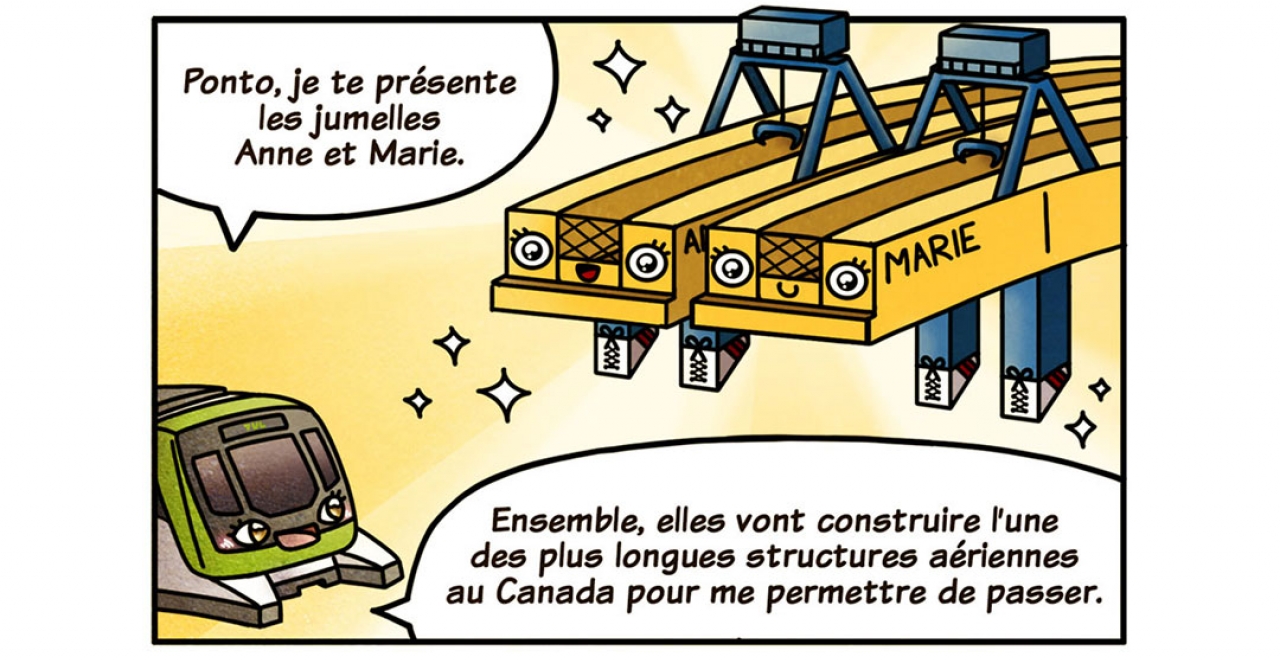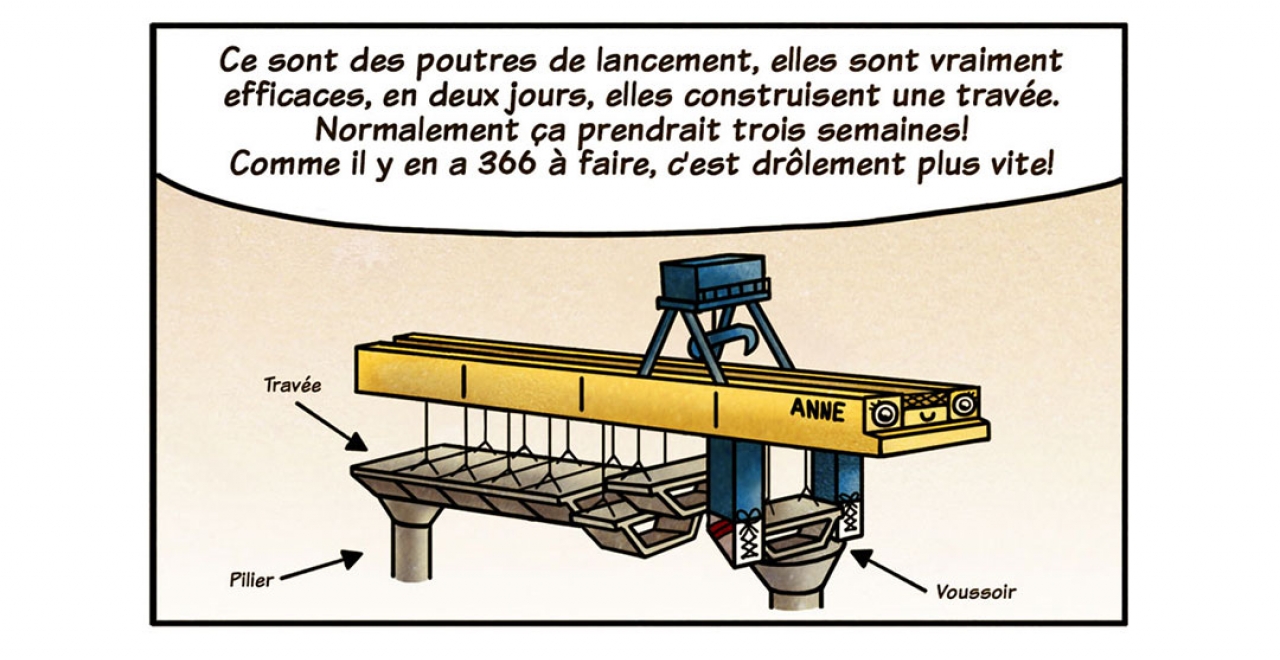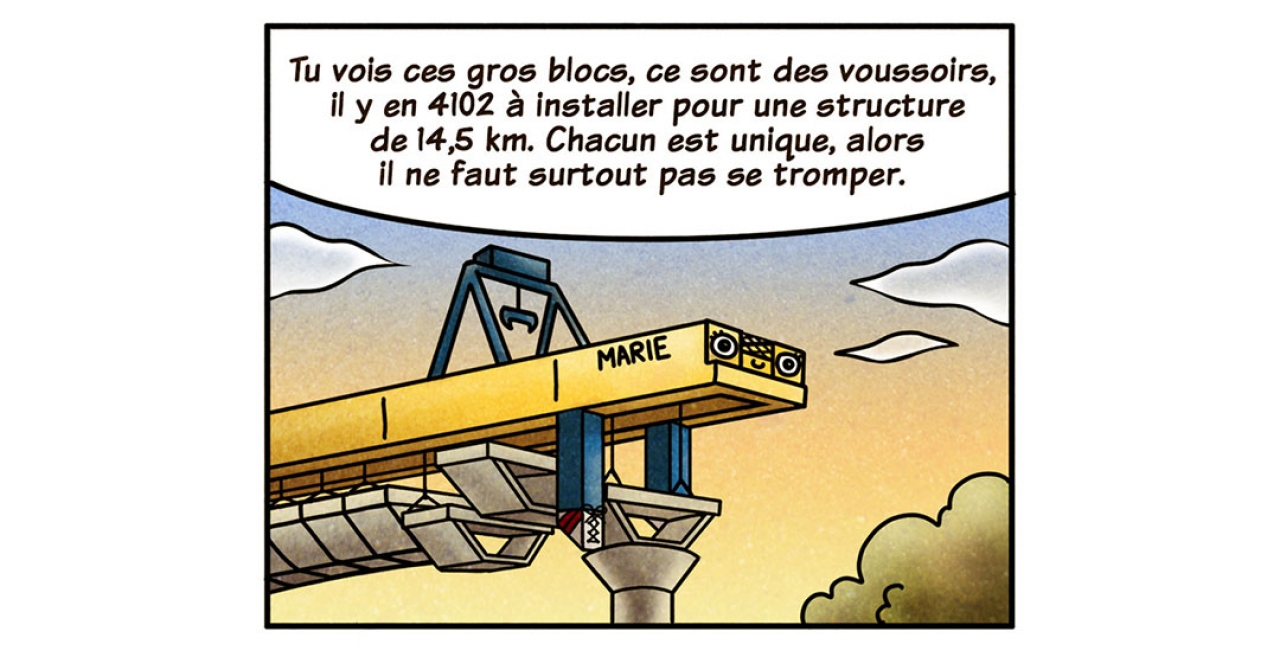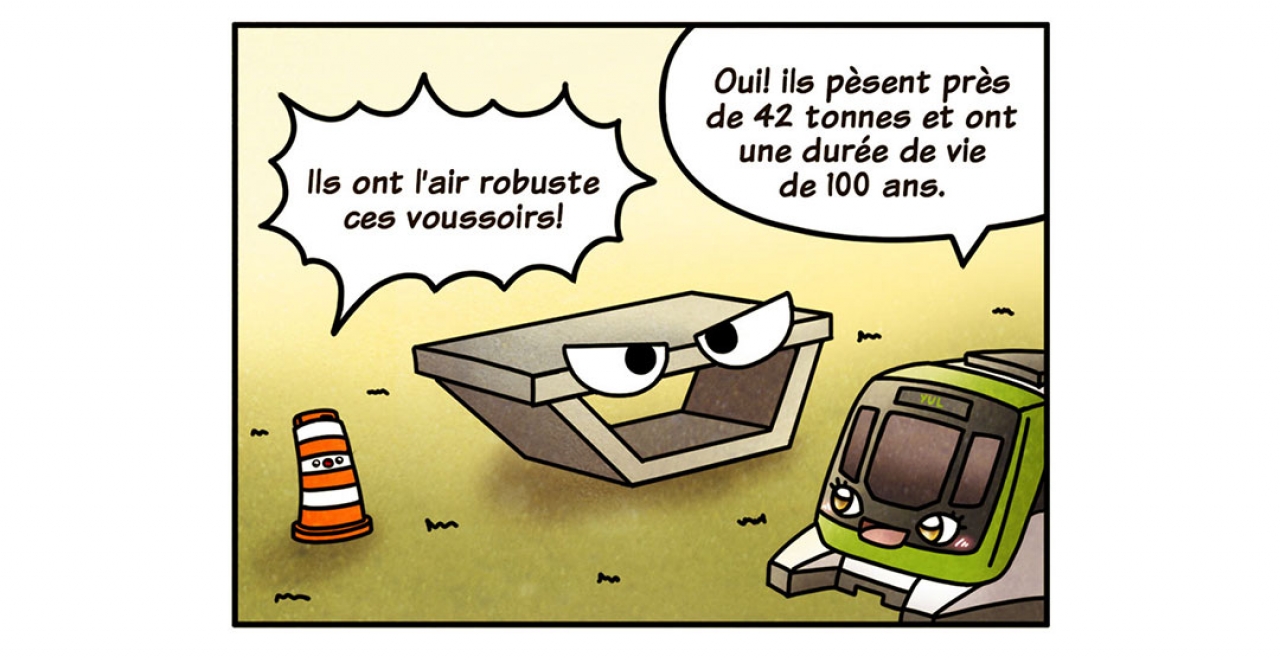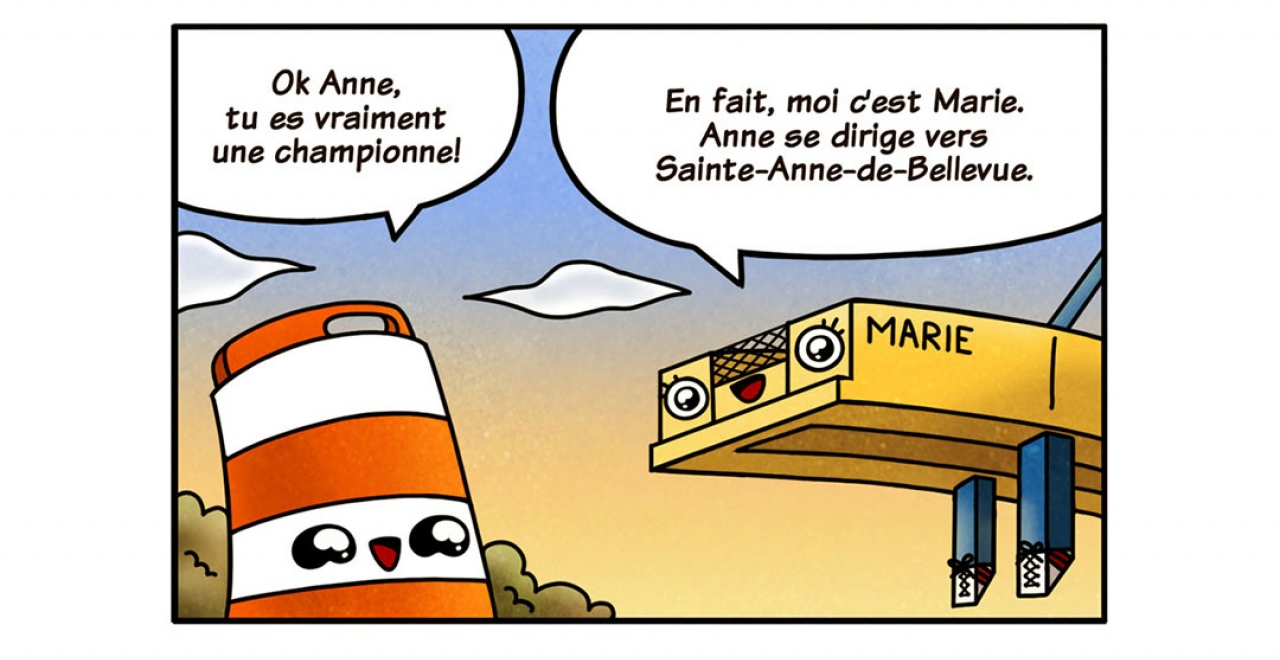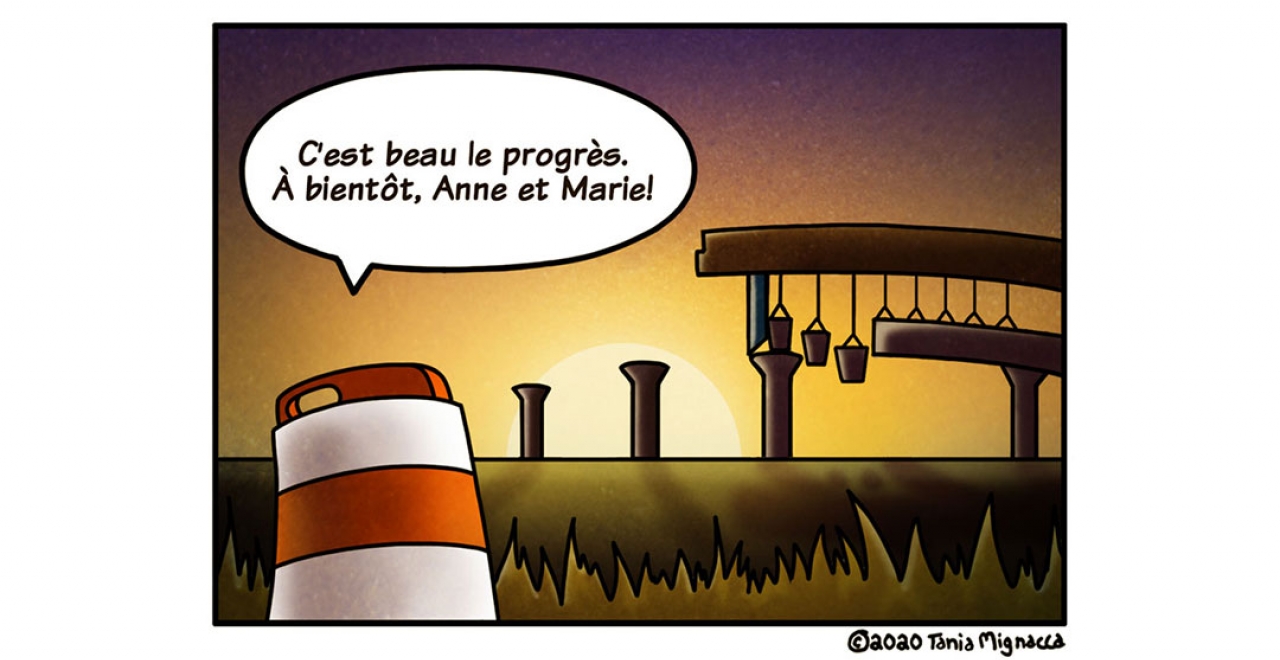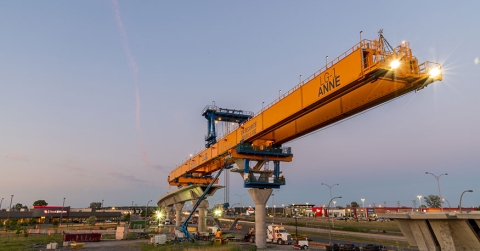
The REM on the West Island in three questions
The elevated structure on the West Island, as well as the two imposing Anne and Marie launching gantries used to build it, have attracted the attention of many people. Here are the answers to the three questions most frequently asked by the public.
1. What will be the REM’s route on the West Island
The REM’s elevated structure on the West Island will be 14.5 km long, making it one of the longest in Canada. It runs along Highway 40, beginning its route on the south side and then crossing over to the north service road at Saint-Jean Boulevard. Three stations will be integrated into this elevated structure to reach the final Anse-à-l’Orme station at ground level, on Chemin Sainte-Marie in Sainte-Anne-de-Bellevue:
- Des Sources (at Des Sources Boulevard)
- Fairview-Pointe-Claire (near the shopping centre, at Fairview Avenue)
- Kirkland (at Jean-Yves Street)
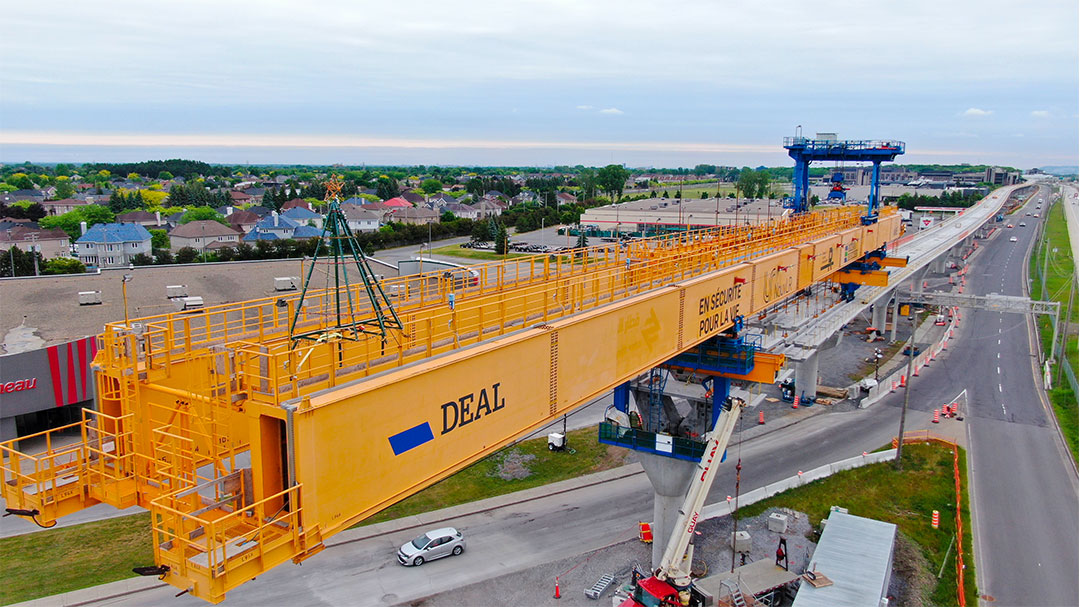
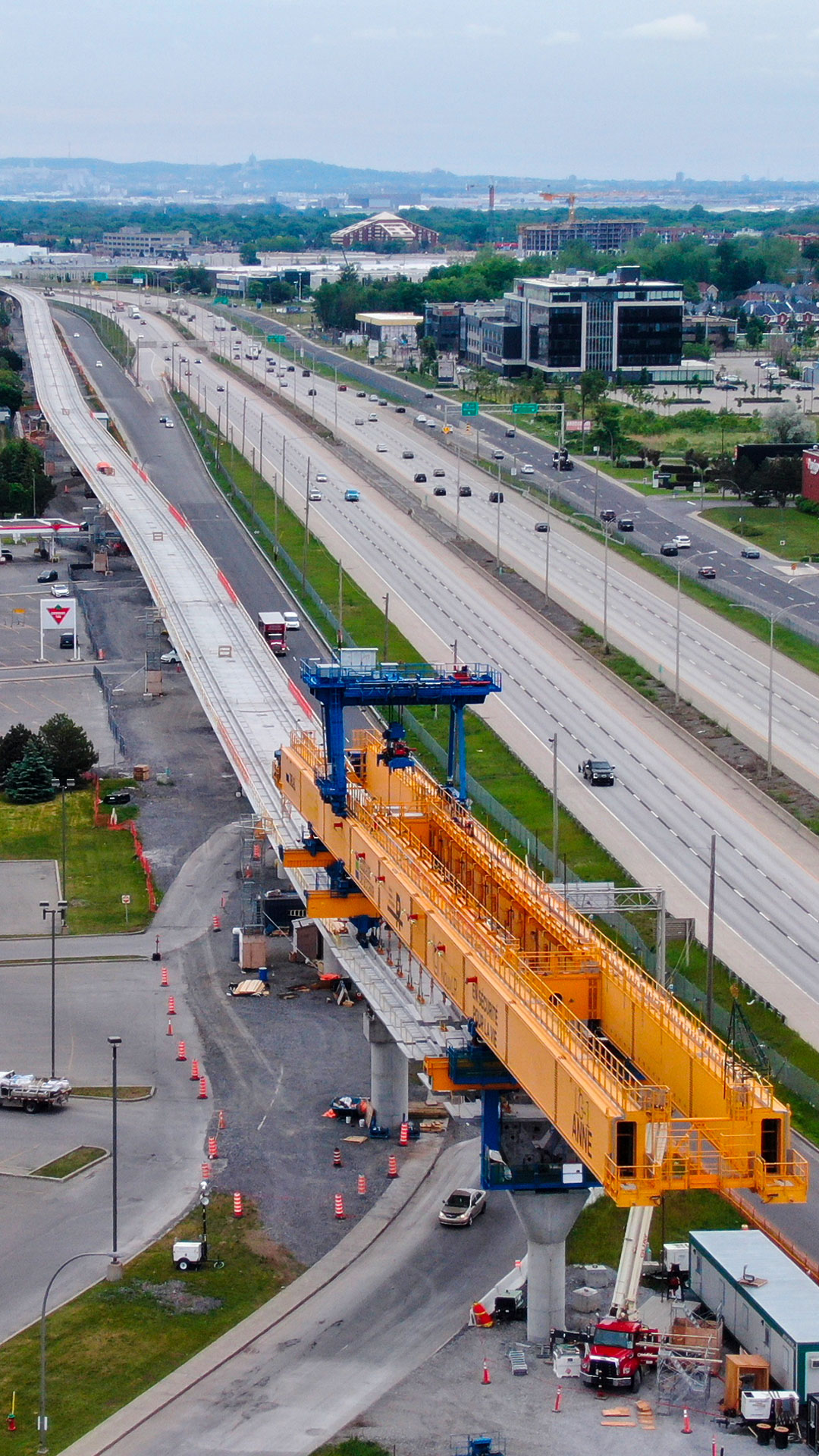
Curves and elevation
Some people have noticed that the elevated structure has curves and fluctuates in elevation. These differences in the level of the structure are quite normal, since it follows the natural level of the ground. These variations are also due to the clearance of some entrances, as can be seen in this picture. The curves, meanwhile, follow the movement of Highway 40.
2. What kind of work can be expected on the West Island in 2020?
In terms of work, there are three things to remember for 2020:
- Launching gantries: The launching gantries Anne and Marie are on the move again! Anne is continuing on to Sainte-Anne-de-Bellevue. She recently crossed St. Charles Boulevard in Kirkland. Marie, for her part, has moved past André Avenue in Dorval and will cross Des Sources Boulevard this fall! For more information on the construction method using the launching gantries, see our news item.
- Pillars and foundations: Before the launching gantries arrive in a sector, foundation work must be done, involving installing caisson piles, then building the concrete columns that support the structure. This work is continuing in the western sector this year, all along the future route. More than 200 of the structure’s pillars have been built to date, out of a total 380.
- Stations : Two stations will begin to take shape in 2020. Over the past few weeks, construction of the foundations for the Anse-à-l’Orme and Fairview-Pointe-Claire stations has begun, and their structure will be visible by year-end.
3. How do the prefabricated segments making up the structure hold together?
The launching gantries are used to lift and place the segments, which together form a span; there are between 11 and 13 segments for one span. The segments are connected to each other by means of tensioned steel cables, which pass through each of them, to form a strong deck to support the passage of the REM. Epoxy glue is applied between each segment and the cables are then tensioned using jacks to form a solid span between two pillars. The use of epoxy is one of the reasons the gantries have to stop working in the winter, because the glue no longer adheres at low temperatures.
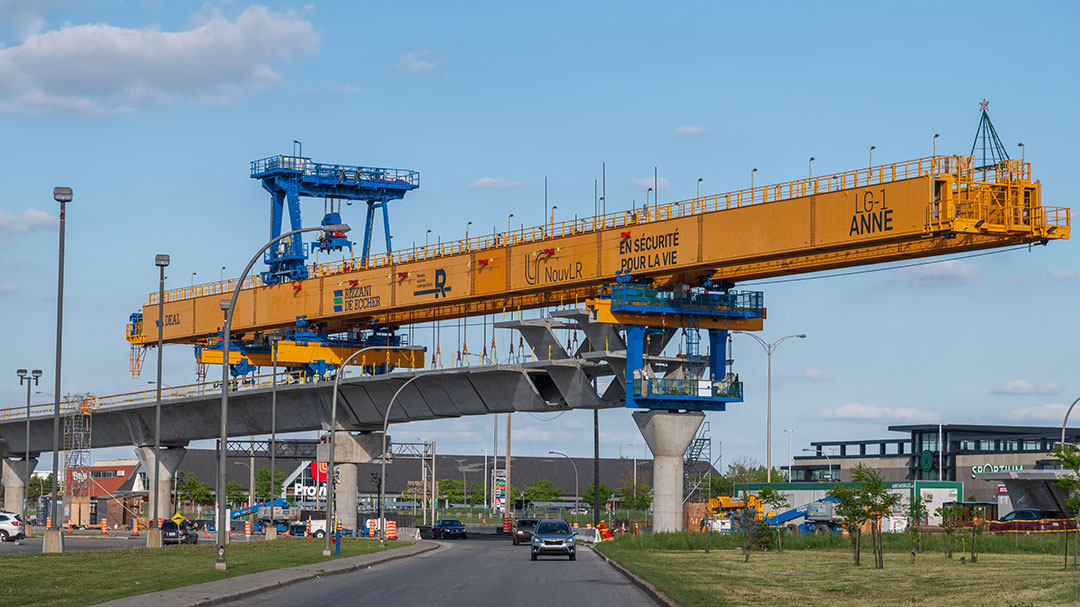
![]()
The REM on the West Island
- 4 stations along Highway 40
- Rush hour frequency: 10 minutes
- Off-peak frequency: 15 minutes
- Trip time from Central Station:
- 23 minutes from Des Sources
- 27 minutes from Fairview-Pointe-Claire
- 30 minutes from Kirkland
- 33 minutes from Anse-à-l’Orme
- Commissioning of the branch: 2023
